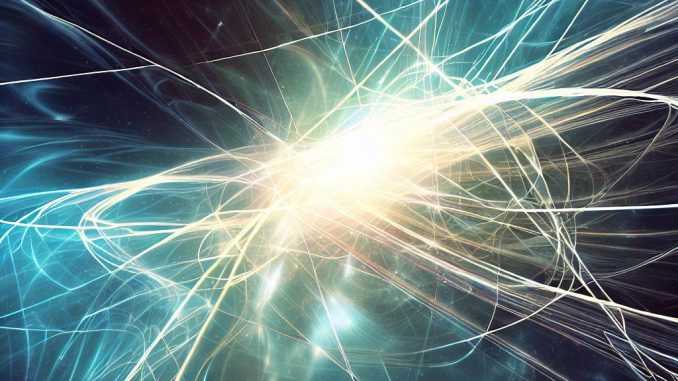
Superstring theory is one of the most ambitious attempts to unify all the fundamental forces and particles of nature in a single framework. It posits that the basic constituents of reality are tiny vibrating strings that exist in 10 dimensions, six of which are hidden from our perception. Superstring theory also incorporates supersymmetry, a symmetry that relates bosons and fermions, two types of elementary particles.
However, superstring theory faces many challenges, both theoretical and experimental. One of them is how to account for the observed expansion and acceleration of the universe, which is attributed to a mysterious form of energy called dark energy. Another is how to explain the origin and nature of gravity, which is described by Einstein’s general relativity as the curvature of space-time.
In this article, we will discuss how a team of researchers at Kyoto University is trying to address these issues by using higher dimensions in de Sitter space, a mathematical model of a universe with a positive cosmological constant. We will also explain some of the implications and predictions of their approach, as well as some of the open questions and future directions.
The Kyoto Approach
The team of researchers at Kyoto University, led by Professor Masahiro Hotta, has developed a novel way of using higher dimensions in de Sitter space to explain gravity in the early universe. Their approach is based on two key ideas: holography and entanglement.
Holography is a principle that states that the information content of a volume of space can be encoded on its boundary surface. This means that a higher-dimensional space can be equivalent to a lower-dimensional one, as long as they share the same boundary. For example, a five-dimensional de Sitter space can be mapped onto a four-dimensional Minkowski space via holography.
Entanglement is a quantum phenomenon that occurs when two or more particles share a quantum state and become inseparable. This means that their properties are correlated even when large distances separate them. For example, if two entangled particles have opposite spins, measuring the spin of one will instantly reveal the spin of the other.
The Kyoto team proposes that gravity can be understood as a result of entanglement between particles on the boundary of de Sitter space. They argue that when the temperature was very high and quantum effects were dominant in the early universe, all particles were entangled on the boundary surface. This created a quantum network that encoded all the information about de Sitter space. As the universe cooled down and expanded, some particles became disentangled from the network and moved into the bulk of de Sitter space. This reduced the information content.
De Sitter Space and Higher Dimensions
De Sitter space is a solution to Einstein’s field equations that describes a universe with a positive cosmological constant, which means that it has a constant positive energy density and negative pressure. This implies that the universe is expanding accelerated, as observed by astronomers. De Sitter space has a four-dimensional geometry that can be embedded in a five-dimensional flat space, called Minkowski space. This means that a coordinate vector in Minkowski space can represent every point in de Sitter space and vice versa.
The idea of using higher dimensions to explain gravity is not new. In fact, it dates back to 1919, when Theodor Kaluza proposed a five-dimensional theory of gravity that unified it with electromagnetism. Later, Oskar Klein showed that one of the dimensions could be compactified or curled into a small circle so that it would not be observable at large scales. This became known as the Kaluza-Klein theory, a precursor to superstring theory.
Superstring theory evolved in the 1990s into a more general approach called M-theory, incorporating energetic membranes, nicknamed “branes,” and strings. M-theory included the possibility of a large extra dimension, supplementing the ten essential dimensions in which superstrings could live. This extra dimension could be interpreted as de Sitter space and provide a natural explanation for dark energy.









Leave a Reply